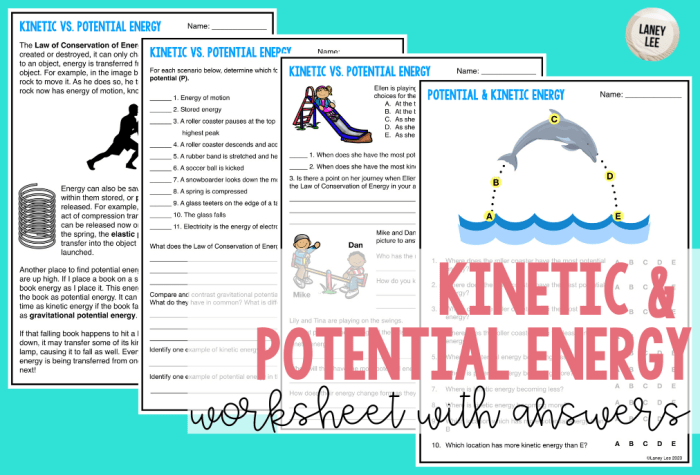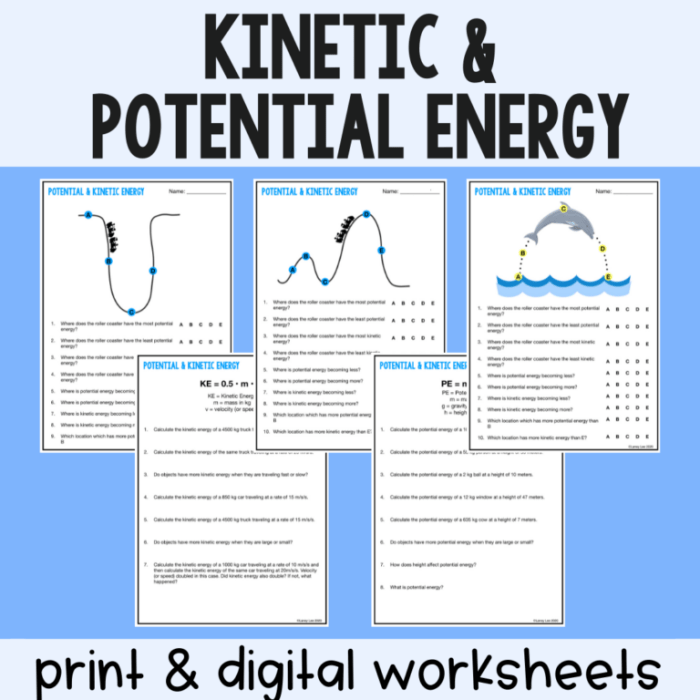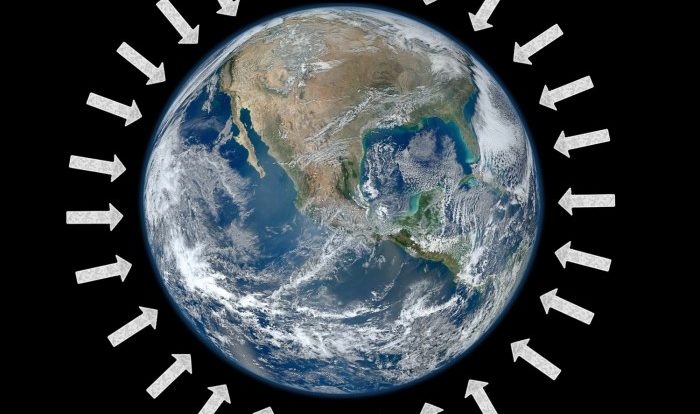Embark on a journey into the realm of kinetic and potential energy, where the ‘kinetic and potential energy worksheet answer’ unveils the intricate dance between energy forms. This comprehensive guide delves into the fundamental concepts, explores real-world examples, and unravels the mysteries of energy conversion, providing a profound understanding of this captivating topic.
Delve into the essence of kinetic energy, its formulaic representation, and the myriad objects that possess it. Uncover the secrets of potential energy, its formula, and the diverse scenarios where it manifests. Witness the dynamic conversion between these energy forms, unraveling the role of friction in this fascinating process.
Kinetic and Potential Energy: Kinetic And Potential Energy Worksheet Answer

Kinetic and potential energy are two fundamental forms of energy that describe the motion and position of objects. Understanding these concepts is crucial in various scientific fields, including physics, engineering, and mechanics.
Kinetic Energy, Kinetic and potential energy worksheet answer
Kinetic energy is the energy possessed by an object due to its motion. It is directly proportional to the object’s mass and the square of its velocity.
Formula: $K = 1/2 mv^2$ where: – $K$ is kinetic energy (in joules) – $m$ is mass (in kilograms) – $v$ is velocity (in meters per second)
Examples: – A moving car – A flying ball – A spinning top
Factors affecting kinetic energy: – Mass: Higher mass results in higher kinetic energy. – Velocity: Increased velocity significantly increases kinetic energy.
Potential Energy
Potential energy is the energy stored within an object due to its position or condition. It is the energy that an object has the potential to release or convert into other forms of energy.
Formula: $U = mgh$ where: – $U$ is potential energy (in joules) – $m$ is mass (in kilograms) – $g$ is acceleration due to gravity (9.8 m/s²) – $h$ is height (in meters)
Examples: – A raised object, such as a ball held above the ground – A stretched rubber band – A coiled spring
Factors affecting potential energy: – Mass: Higher mass increases potential energy. – Height: Objects at greater heights have higher potential energy. – Gravitational acceleration: Potential energy is directly proportional to the strength of gravity.
Conversion of Energy
Kinetic energy and potential energy can be converted into each other. When an object moves, its kinetic energy increases, while its potential energy decreases. Conversely, when an object is raised or held in position, its potential energy increases, while its kinetic energy decreases.
Examples: – A rolling ball loses kinetic energy as it rises and gains potential energy. – A falling object gains kinetic energy as it loses potential energy. – A bouncing ball converts kinetic energy into potential energy as it rises and vice versa as it falls.
Role of friction: Friction opposes motion, causing a loss of kinetic energy and a corresponding increase in potential energy. This is because friction converts kinetic energy into heat.
General Inquiries
What is the formula for kinetic energy?
Kinetic energy (KE) is calculated using the formula KE = 1/2 – mv^2, where ‘m’ represents the object’s mass and ‘v’ represents its velocity.
What factors affect potential energy?
Potential energy (PE) is influenced by factors such as an object’s mass (m), gravitational acceleration (g), and height (h). The formula for gravitational potential energy is PE = mgh.
How is kinetic energy converted to potential energy?
Kinetic energy can be converted to potential energy when an object gains height or is lifted against gravity. This conversion occurs when an object is thrown upward or placed on a higher platform.

